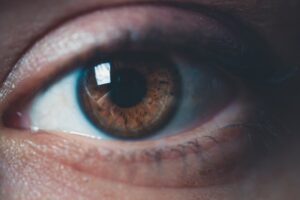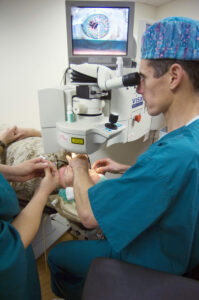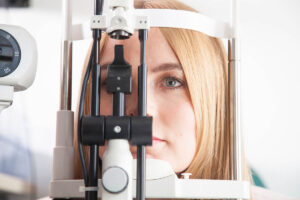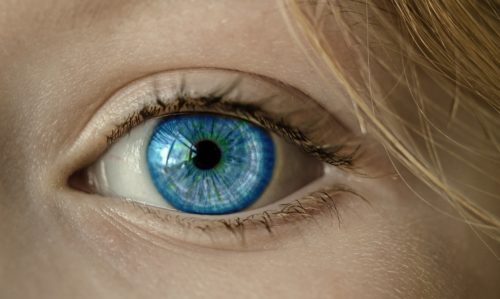If you are nearsighted, then LASIK may be the perfect solution for you. This eye surgery can improve your vision by correcting your nearsightedness. It is a safe and effective procedure that can be done on an outpatient basis. In this blog post, we will provide a comprehensive guide on how to prepare for LASIK and what to expect after the surgery.
Contents
What Is LASIK?

LASIK is a type of laser eye surgery for people who are nearsighted and want to reduce their dependence on glasses or contact lenses. It corrects nearsightedness by reshaping the cornea, which is the clear front surface of the eye.
LASIK is also a safe and proven procedure that has helped millions of people reduce or even eliminate their need for glasses and contacts.
What Is Nearsightedness?
Near-sightedness is a common vision condition that affects millions of people. It occurs when the eyeball is too long or the cornea has too much curvature, causing light rays to focus in front of the retina instead of directly on it. This results in blurry distance vision and clears the near vision.
This disease is also a very common and treatable eye condition. LASIK, or laser-assisted in situ keratomileuses, is a refractive surgery that can correct nearsightedness.
How Does LASIK for Nearsightedness Work?
The working of LASIK for nearsightedness is based on the principle that if a small flap of cornea is cut and then replaced with a new, artificial cornea, vision can be corrected. The LASIK procedure is performed as an outpatient procedure under local anesthesia.
The doctor makes an incision in the center of your eye just above your pupils. A tiny lens array called a microkeratome is inserted into the eye to cut the lens tissue. This exposes the pupil and allows the doctor to place the artificial cornea over it. The laser is then used to reshape the surface of the cornea.
After the LASIK procedure is complete, your doctor will bandage your eyes and you can go home. You may experience some mild discomfort and blurry vision for a few days after the surgery. However, most people report excellent vision after LASIK.
Throughout the working of LASIK for nearsightedness, many factors are taken into account to ensure the best possible outcome. These include the type of LASIK procedure that is being performed, the age, sex, and refractive error of the patient, and the other surgical treatments that have been undertaken on the eye in recent years.
Types of LASIK for Nearsightedness

There are three types of LASIK for nearsightedness: standard, advanced, and ultra-advanced.
Standard LASIK involves the use of a standard-power laser to correct your vision. The surgery is done on an outpatient basis and generally takes about 30 minutes.
Advanced LASIK involves the use of a more powerful laser that can correct more intermediate levels of myopia (nearsightedness). The surgery is done on an outpatient basis and generally takes about 60 minutes.
Ultra-advanced LASIK involves the use of the most powerful laser available, which can correct nearly all cases of myopia. The surgery is done on an outpatient basis and generally takes about 90 minutes. This type of LASIK is usually only available to those who are extremely nearsighted and have few other options.
There is also a type of LASIK called “dry eye” LASIK. This type of surgery is only available to people who have severe dry eyes. It involves the use of a special laser that does not require anesthesia.
Pros and Cons of LASIK for Nearsightedness
There are pros and cons to LASIK for nearsightedness, but the benefits typically outweigh the drawbacks. Here are some key points to consider:
The Pros of Lasik for Nearsightedness
Lasik can improve your vision significantly, allowing you to see up close and at a distance. Depending on your prescription, LASIK may also improve your peripheral vision.
Lasik is usually successful in correcting your distant vision as well. In some cases, it may even improve your reading accuracy and visual comprehension.
Some people experience minimal or no side effects from LASIK surgery. However, some people do experience mild post-operative discomforts, such as a burning sensation or mild fluid retention. This usually disappears within a few days or weeks.
The Cons of Lasik for Nearsightedness
The major drawback of LASIK for nearsightedness is that it cannot correct your far vision. If you are very nearsighted, LASIK may not be a suitable option.
Another potential downside of LASIK surgery is the high cost. Depending on the type of LASIK procedure you undergo, it can range from 30,000 to 70,000 per eye.
If you have poor vision in one or both eyes, LASIK may not be the best option for you. For example, if your myopia is severe and your eyes are close together, LASIK may not be able to improve your vision sufficiently. In these cases, other forms of corrective lenses, such as spectacles or contact lenses, may be a better option.
Medically Necessary Requirements for LASIK for Nearsightedness

There are a few mandatory requirements for LASIK for nearsightedness that must be met to have the surgery performed. The first is that you have a refractive error of -6.00 diopters or more in your left eye and -6.25 diopters or more in your right eye. If either of these measurements falls within +/-0.50 diopters, then you are eligible for the surgery. Additionally, you must also have normal corneal clarity and no other medical conditions that would preclude LASIK surgery.
After meeting these requirements, there are still some other factors that can influence whether or not LASIK is the best option for you, such as how serious your nearsightedness is and how good your vision is without glasses/ contact lenses.
Some of the requirements are also based on the type of laser used in LASIK. For example, if you are having surgery with a femtosecond laser, then you must have excellent corneal sensitivity. Also, if you are having surgery with an excimer laser, then you must have no other medical conditions that would preclude the surgery.
Aftercare Instructions After LASIK for Nearsightedness
Following surgery, many patients experience increased tiredness and require a reduced work schedule. It is important to follow the surgeon’s post-operative instructions carefully. Additionally, patients should be aware of certain things that can help them manage their new vision.
- It is advised not to drive for at least six weeks following LASIK surgery; however, most people can resume normal activities within a few days.
- Patients should avoid using artificial lighting immediately after the procedure as this could worsen their vision.
- Some patients may find it helpful to wear shades or glasses for the first week or two after LASIK surgery to allow their eyes time to adjust.
- Patients should also drink plenty of fluids and avoid caffeine and alcohol as these can aggravate headaches or dry eyes.
In general, most people have good vision following LASIK surgery and do not need any additional supplementation or advice beyond what they received from their surgeon. However, if any changes occur in vision such as increased sensitivity to light or distortion of images, it is important to contact the doctor for further evaluation.
Conclusion
LASIK for nearsightedness is a safe and effective way to restore clear vision. If you are considering the procedure, consult with your doctor about the best option for you. With its proven track record of success, LASIK can help you enjoy clearer vision and improved quality of life.
For more assurance, talk to your doctor about the risks and benefits associated with LASIK. By weighing the positives and negatives of LASIK for nearsightedness, you can make an informed decision on whether or not it is right for you.
Lasik surgery is a safe 10-minute procedure to help you get rid of glasses. MantraCare offers the most advanced LASIK options. If you have any questions on LASIK surgery feel free to reach out to us at +91-9711116605
